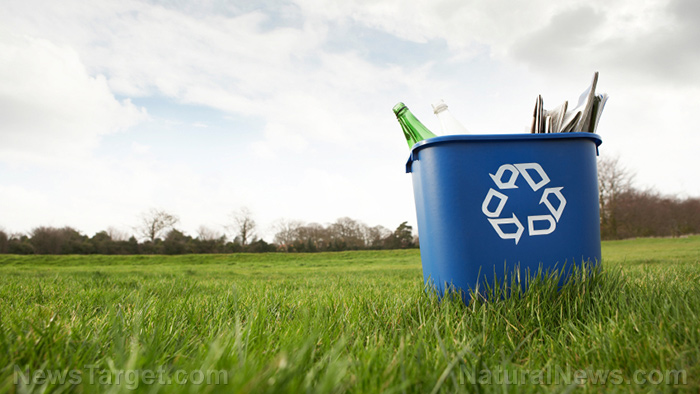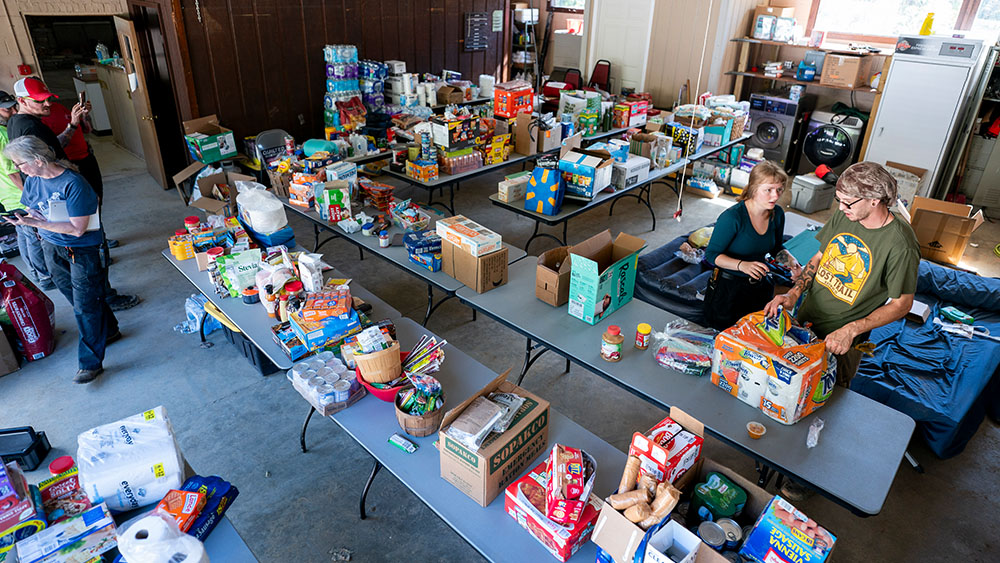 Parler
Parler Gab
Gab
- Doug Simons, a wilderness survival expert, is challenging the mass-produced shoe industry by crafting durable, eco-friendly sandals from discarded truck tires. These "three-point sandals" are inspired by indigenous techniques and offer a sustainable, customizable alternative to conventional footwear.
- Drawing from over 20 years of primitive living and learning from cultures like the Tarahumara and Navajo, Simons shares his expertise in creating functional, environmentally conscious sandals. His approach highlights the value of traditional craftsmanship in modern sustainability efforts.
- The sandal-making process involves selecting the right tire, cutting the sidewall, and meticulously tracing and sizing the sandal to fit the wearer’s foot perfectly. Simons emphasizes safety and precision, especially when cutting rubber and creating holes for lacing.
- To enhance comfort, a layer of saddle leather is added to the footbed, providing a softer, less toxic surface. The sandals are laced with leather thongs or parachute cord, and wearers are advised to break them in gradually for optimal fit and comfort.
- Beyond footwear, Simons' sandals symbolize a shift away from consumerism and toward eco-conscious choices. Marjory Wildcraft, a sustainable living advocate, champions the idea of reducing reliance on mass production and embracing hands-on, planet-friendly practices.
It's time to step into a more sustainable future — one sandal at a time
Once assembled, the sandals require a bit of breaking in. "For the first 20 minutes, consciously make sure your heel lands center," Simons advised. "And don’t wear them too long at first — some people need to build up tolerance." Wildcraft, who has been wearing her pair for months, shared her experience. "The thin straps Doug warned me about didn’t work well, but thicker straps from the Tarahumara people made all the difference. These sandals are now my go-to footwear." Simons' sandals are more than just footwear — they're a statement against consumerism and a nod to traditional craftsmanship. "These sandals are durable, customizable, and made from materials that would otherwise end up in a landfill," Wildcraft said. "They're a perfect example of how we can live more sustainably." For those inspired to try their hand at making their own sandals, Simons’ demonstration offers a clear, step-by-step guide. As Wildcraft concluded, "This is about rethinking our choices and embracing a more hands-on, eco-friendly lifestyle. It’s not just about shoes—it's about the impact we have on the planet." Whether you're a seasoned DIY enthusiast or a beginner looking to reduce your environmental footprint, Simons' tire-to-sandal transformation is a compelling call to action. As Wildcraft put it, "It’s time to step into a more sustainable future—one sandal at a time." If you want to learn more about the essential skills Wildcraft has gathered for you, purchase your copy of the "Off Grid Survival Skills" bundle here. You will get a copy of the videos from all 10 episodes, 29 life-saving video bonuses, 21 exclusive eBooks and and a physical copy of Wildcraft's "The Grow Book System," which will be delivered directly at your doorstep. Sources include: BrightU.com BrighteonUniversity.comFrom farm to table in one hour: The revolutionary art of homemade mozzarella
By Jacob Thomas // Share
Health Ranger Report: Mike Adams and Tina Blanco talk about the unsung heroes of disaster relief
By Kevin Hughes // Share
How ditching modern cooling can save the planet and transform your health
By Jacob Thomas // Share
Maximizing recovery after winter workouts with protein blends
By Zoey Sky // Share
Beyond antibiotics: How to build immunity and prevent infections with food and herbs
By Jacob Thomas // Share
Governments continue to obscure COVID-19 vaccine data amid rising concerns over excess deaths
By patricklewis // Share
Tech giant Microsoft backs EXTINCTION with its support of carbon capture programs
By ramontomeydw // Share
Germany to resume arms exports to Israel despite repeated ceasefire violations
By isabelle // Share










